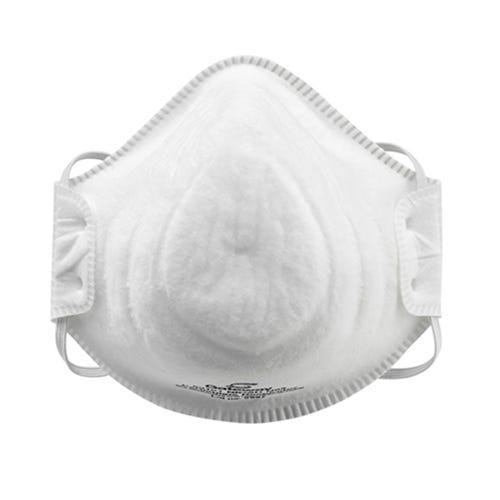Respirators, PAPRs & Face Masks

Filters >>
Filters >>
Narrow it Down!
Construction sites can harbor a variety of airborne hazards, from dust and fumes to harmful gases and vapors. Choosing the right respiratory protection is essential to ensure worker safety and prevent respiratory illnesses. Here's a breakdown of the key differences between disposable respirator masks, masks with cartridges, and Powered Air-Purifying Respirators (PAPRs) to help you select the best option for the job:
Disposable Respirator Masks: These single-use masks offer basic protection against airborne particles like dust, mists, and some allergens. They are typically made of non-woven fabric with a filter media that captures particles as you breathe. While affordable and convenient, they come in limited filtering capacities designated by N, R, or P ratings (e.g., N95). Disposable masks offer no protection against gases or vapors, and their effectiveness decreases as they become clogged. Use them for tasks with limited dust exposure, like sanding drywall or working with insulation.
Respirator Masks with Cartridges: These reusable masks provide a higher level of protection against a wider range of airborne hazards. They consist of a facepiece with a replaceable filter or connection point for cartridges. The facepiece forms a tight seal around the face, directing all inhaled air through the filter or cartridge. Cartridges come in various types, each targeting specific gases, vapors, or combinations. They require proper fit testing and user training for safe and effective use. These masks offer superior protection compared to disposables, but are ideal for situations with known contaminants – consult the Material Safety Data Sheet (MSDS) for the chemicals used on-site to identify the right cartridge type.
Powered Air-Purifying Respirators (PAPRs): These advanced systems provide the highest level of respiratory protection on jobsites. PAPRs consist of a tight-fitting facepiece or helmet connected to a battery-powered blower unit that filters contaminated air before supplying clean air to the wearer. PAPRs offer continuous airflow, eliminating the breathing resistance associated with other respirator types. They are ideal for environments with heavy concentrations of unknown airborne contaminants, hazardous substances with poor warning properties, or situations where a tight facial seal with other masks might be difficult to maintain (e.g., facial hair).
Applications and Considerations:
The choice between these options depends on the specific airborne hazards present and the level of protection required. Disposable masks are sufficient for low-risk environments, while respirator masks with cartridges offer a good balance between protection and affordability for known contaminants. PAPRs are the go-to option for heavy contamination, unknown hazards, or situations where comfort and ease of breathing are crucial.
Remember, proper fit is essential for all respirator types. A leaking mask compromises protection. For respirator masks with cartridges, ensure compatibility between the facepiece and cartridges chosen. PAPRs require user training on proper operation and maintenance.
By understanding the distinctions between these respirator options, construction workers in Ohio can make informed decisions for their respiratory safety, safeguarding their health and well-being on the job.

